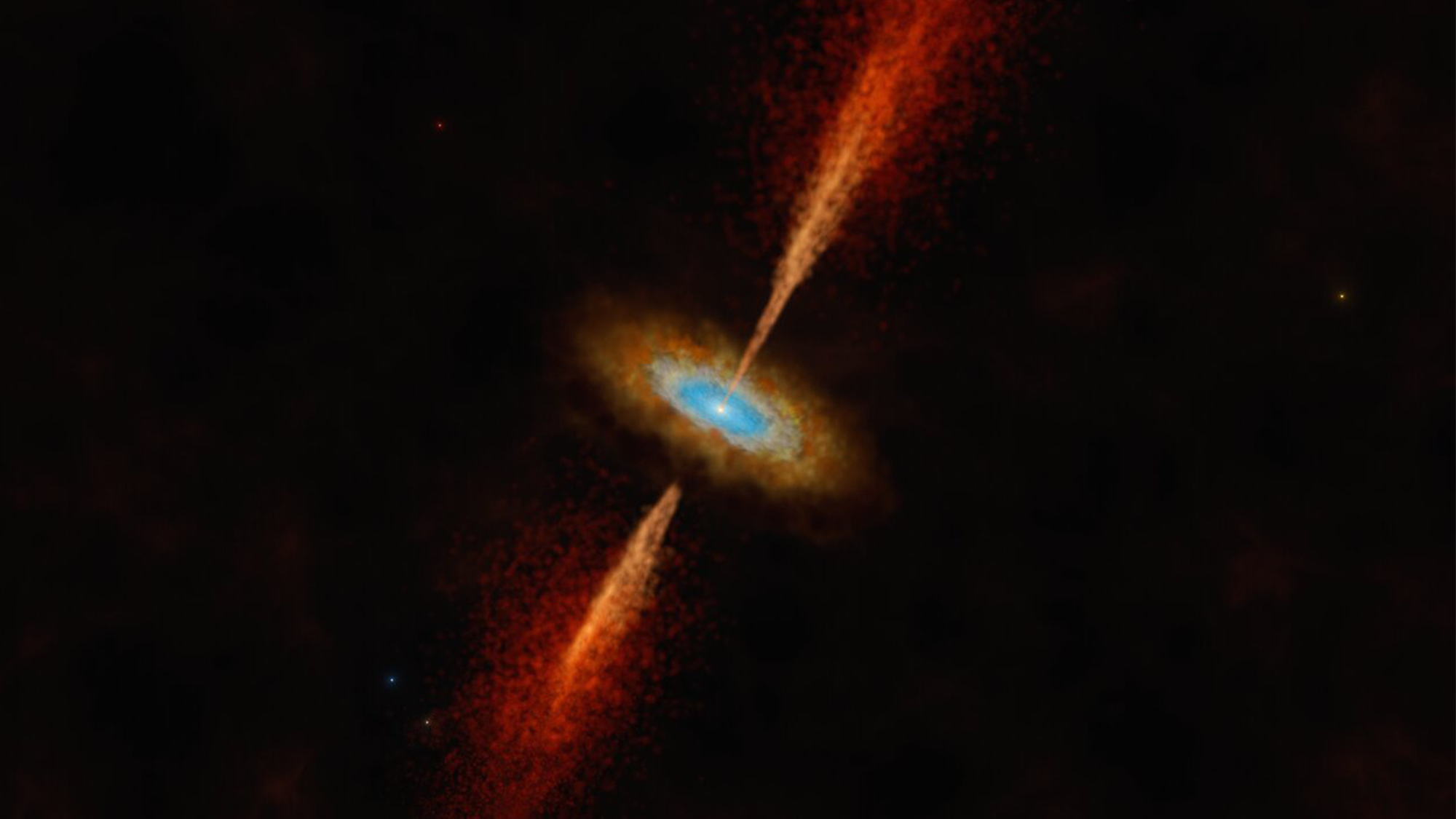

For the first time, astronomers have observed a disc around a young star in a galaxy outside of ours called Large Magellanic Cloud. This extragalactic neighbor of our home Milky Way galaxy is located almost 200,000 light-years away from Earth and could crash into our home galaxy in about two billion years.
[Related: A ‘bridge of stars’ connects two of our closest galaxies.]
The new observations were made with the Atacama Large Millimeter/submillimeter Array in Chile. A massive young star in the star system HH 1177 is growing and taking in matter from its surroundings. As the matter gathers, a spinning disc called an accretion disc is forming. This is the first time that astronomers have seen an accretion disc in an extragalactic area. The discovery is described in a study published November 29 in the journal Nature.
“When I first saw evidence for a rotating structure in the ALMA data I could not believe that we had detected the first extragalactic accretion disc, it was a special moment,” Anna McLeod, a study co-author and astronomer Durham University in the United Kingdom, said in a statement. “We know discs are vital to forming stars and planets in our galaxy, and here, for the first time, we’re seeing direct evidence for this in another galaxy.”
This new study follows previous observations of star system HH 1177 made with the Multi Unit Spectroscopic Explorer instrument on the European Southern Observatory’s Very Large Telescope. In 2018, the telescope spotted a jet from a forming star located deep inside a gas cloud in the Large Magellanic Cloud.
“We discovered a jet being launched from this young massive star, and its presence is a signpost for ongoing disc accretion,” said McLeod.
To confirm that there was an accretion disc around the star, the authors needed to measure the movement of dense gas around the young star. As matter is pulled towards this expanding star, it can’t fall directly onto it. The matter flattens into a spinning disc around the star instead. Near the center, the disc rotates faster. The difference in speed is the evidence the astronomers needed to determine that an accretion disc is present around the star.
“The frequency of light changes depending on how fast the gas emitting the light is moving towards or away from us,” study co-author and astrophysicist at Liverpool John Moores University in the UK Jonathan Henshaw said in a statement. “This is precisely the same phenomenon that occurs when the pitch of an ambulance siren changes as it passes you and the frequency of the sound goes from higher to lower.”
[Related: Your guide to the types of stars, from their dusty births to violent deaths.]
ALMA’s detailed frequency measurements made it possible to distinguish the characteristic spin of a disc and confirm the detection of the first disc around a young star outside of our galaxy.
Enormous stars like this one form significantly faster and live far shorter lives than low-mass stars like our sun. In the Milky Way galaxy, these giant stars are particularly challenging for astronomers to observe. The dusty material that forms them can hide the stars from view right when a disc is shaping around them.
However, in the Large Magellanic Cloud, the material from which new stars are being born is quite different from the star-making matter in the Milky Way. Due to its lower dust content, star system HH 1177 isn’t cloaked in the dusty cocoon it was born in. The lack of dust compared to similar systems in the Milky Way is giving astronomers a far away, but unobstructed view of star and planet formation in the Large Magellanic Cloud.
“We are in an era of rapid technological advancement when it comes to astronomical facilities,” McLeod said. “Being able to study how stars form at such incredible distances and in a different galaxy is very exciting.”